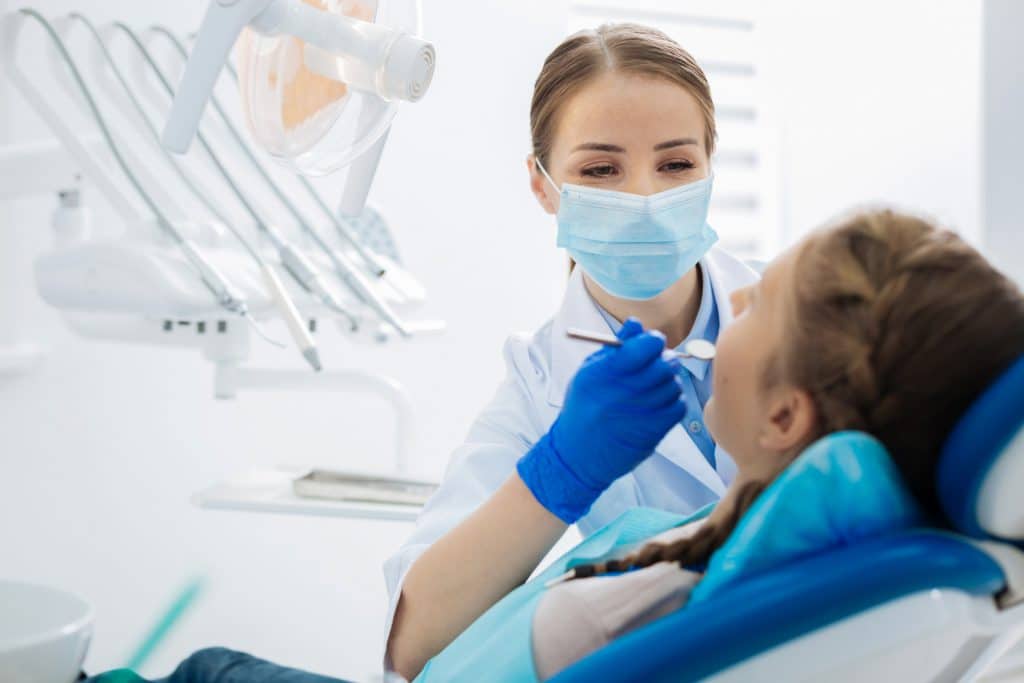SEDATION DENTISTRY
Have you been avoiding the dentist’s office because of anxiety or fear?
Do you have a low threshold for discomfort? If so, sedation dentistry can help you receive the care you need. At The Art of Dentistry we offer a variety of sedation options for patients who want to relax through a lengthy procedure or increase their comfort while undergoing dental treatments. Sedation dentistry can also assist patients who have difficulty sitting still for long periods of time. By using sedation dentistry, our team can ensure your comfort during any dental procedure.
Who Would Benefit from Sedation Dentistry?
- Phobia or anxiety: Patients with severe dental phobia may avoid visiting the dentist for routine checkups and even when a dental problem arises. This can not only aggravate an existing condition, but also lead to more extensive and costly procedures down the line.
- Certain medical conditions: For patients with Parkinson’s Disease, Cerebral Palsy, or other conditions that make sitting still a challenge, sedation dentistry can make dental treatments more comfortable and accessible.
- An extensive procedure: Sedation dentistry is also sought out by those who are in need of more extensive dental work, including a full mouth reconstruction or a smile makeover. In addition to providing optimal comfort, sedation dentistry allows your dentist to combine multiple treatments into one procedure, reducing your time spent in the dentist’s chair.
Sedation Options at The Art of Dentistry
Laughing Gas or Nitrous Oxide Sedation


Oral Sedation
Prior to treatment, patients are given an oral sedative to encourage relaxation. Your dentist may recommend taking this pill the night prior to your visit or up to an hour before your procedure. Often, patients under oral sedation cannot recall details of their procedure. If you move forward with this treatment option, you will need to arrange a ride to and from our office.
IV Sedation

Frequently Asked Questions
Is sedation dentistry safe?
Yes, sedation dentistry is considered safe when administered by qualified and experienced dental professionals. Dentists who provide sedation undergo specialized training to ensure patient safety. Before the procedure, patients’ medical history and health condition are thoroughly evaluated to determine the appropriate type and dosage of sedation. During the treatment, vital signs are closely monitored to ensure the patient’s well-being. Sedation levels can be adjusted as needed. After the procedure, patients are monitored until the sedation wears off and they are stable enough to go home safely. Dental professionals trained in sedation dentistry are prepared to handle any potential emergencies. However, patients must disclose their health information to the dentist beforehand. While sedation dentistry has inherent risks like any medical procedure, the benefits of a relaxed dental experience for individuals with dental anxiety or fear are significant. With proper precautions, sedation dentistry offers a safe and comfortable option for various dental procedures.
Will I be unconscious during the procedure?
The level of consciousness during a dental procedure with sedation depends on the type of sedation used. There are different levels of sedation in dentistry, ranging from minimal sedation (awake and relaxed) to general anesthesia (completely unconscious). Here are the common levels of sedation and their effects on consciousness:
Minimal Sedation: With minimal sedation, you will be awake and conscious throughout the procedure, but you will feel relaxed and may experience a reduced sense of anxiety.
Moderate Sedation (Conscious Sedation): Under moderate sedation, you will remain conscious, but you may feel drowsy and may have little or no memory of the procedure.
Deep Sedation: With deep sedation, you will be at the edge of consciousness, still able to respond to verbal commands, but you may drift in and out of sleep.
General Anesthesia: General anesthesia induces complete unconsciousness, and you will be in a state of deep sleep throughout the procedure. You will not have any awareness or recollection of the treatment.
The level of sedation used will be based on the complexity of the dental procedure and your individual needs. Your dentist or dental professional will discuss the sedation options with you and recommend the most appropriate level of sedation based on your comfort level, medical history, and the nature of the dental work involved.
Is there any discomfort or pain during sedation dentistry?
During sedation dentistry, patients typically experience minimal discomfort or pain. The primary aim of sedation is to induce relaxation and reduce anxiety during dental procedures. The level of discomfort or pain encountered during the procedure itself depends on the nature of the dental work being performed, not the sedation method.
Sedation helps patients feel at ease, making them less sensitive to discomfort. Local anesthesia is often used to numb the treated area, ensuring patients do not feel pain during the dental work. While under sedation, patients are conscious and can communicate with the dentist. If any discomfort arises, the dentist can promptly address it.
After the procedure, some patients may experience mild soreness or discomfort, especially with extensive dental work. This is normal and can be managed with over-the-counter pain medication.
Before the sedation appointment, discuss any concerns with your dentist. They will tailor the sedation and treatment plan to ensure your comfort. Sedation dentistry aims to provide a more relaxed and comfortable experience, enabling patients to receive necessary dental care with reduced anxiety and fear.
Are there any potential side effects or risks of sedation?
While sedation dentistry is generally safe, there are potential side effects and risks to consider. These may include drowsiness, dizziness, nausea, and rare allergic reactions to sedative drugs. In cases of deep sedation or general anesthesia, there is a slight risk of respiratory issues. Interaction with certain medications or medical conditions can also impact sedation effectiveness. To mitigate risks, patients must provide a complete medical history to the dental professional. The dentist will carefully evaluate health status to determine the appropriate sedation method and dosage. Close monitoring of vital signs during the procedure and adherence to safety protocols are essential. Following pre-sedation and post-sedation instructions is crucial. When deep sedation or general anesthesia is used, patients should have a responsible adult accompany them to and from the appointment. Overall, with proper evaluation and precautions, sedation dentistry offers a safe and valuable option for providing a relaxed and anxiety-free dental experience for many patients.
How long does the sedation effect last?
The duration of the sedation effect depends on the type of sedation used. Minimal sedation, like nitrous oxide, wears off quickly, allowing patients to resume regular activities soon after the procedure. Moderate sedation may leave patients drowsy and groggy for a few hours, with little memory of the dental work. Deep sedation induces a more prolonged state of drowsiness, requiring several hours of recovery, while general anesthesia causes complete unconsciousness until the effects wear off. Recovery time may vary based on individual factors like metabolism and overall health. It’s crucial to follow post-sedation care instructions provided by the dental team. For deep sedation or general anesthesia, patients should arrange for someone to accompany them home and avoid driving or operating machinery for at least 24 hours. Openly discussing any concerns with the dentist or dental professional beforehand ensures a safe and comfortable sedation experience.
